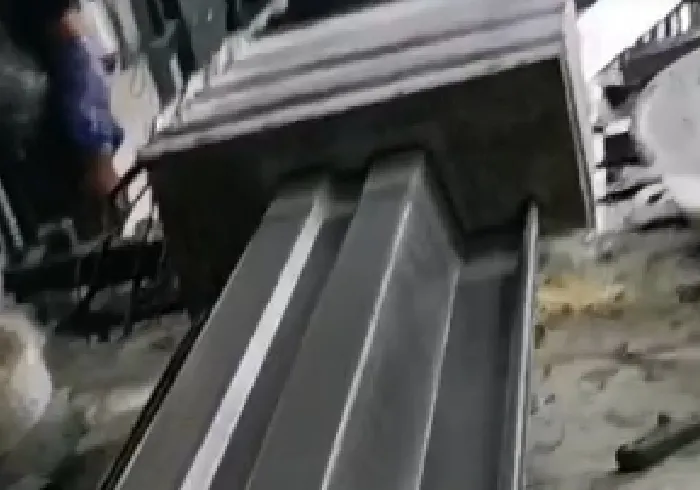loading...
- No. 9, Xingyuan South Street, Dongwaihuan Road, Zaoqiang County, Hengshui, Hebei, China
- admin@zjcomposites.com
- +86 15097380338
- Welcome to visit our website!
Innovative Applications of FRP in Modern Steel Structure Engineering Solutions
FRP Steel Structures Revolutionizing Modern Construction
In recent years, the construction industry has witnessed significant advances in materials technology. Among these innovations, Fiber Reinforced Polymer (FRP) has emerged as a game-changer, especially when integrated with traditional steel structures. FRP offers a unique combination of lightweight properties, exceptional strength, and resistance to environmental degradation, making it an attractive option for modern engineering challenges.
Understanding FRP
FRP is composed of a polymer matrix reinforced with fibers, which can be made from various materials such as glass, carbon, or aramid. These fibers provide the tensile strength necessary to reinforce the polymer, resulting in a composite material that exhibits superior mechanical properties. FRP is known for its high strength-to-weight ratio, corrosion resistance, and ease of fabrication, which makes it suitable for various applications in the construction industry.
Advantages of FRP in Steel Structures
1. Weight Reduction One of the most significant advantages of incorporating FRP into steel structures is the reduction in overall weight. This lightweight characteristic can lead to substantial savings in transportation and installation costs. Additionally, lighter structures place less demand on foundations, potentially decreasing construction costs and timeframes.
2. Corrosion Resistance Steel, while strong, is susceptible to corrosion, which can compromise the structural integrity over time, especially in harsh environments. FRP does not corrode, making it an ideal material for applications in coastal areas, chemical plants, or places with high humidity. The use of FRP in combination with steel can extend the lifespan of structures and reduce maintenance costs.
3. Enhanced Structural Performance FRP can improve the overall performance of steel structures by enhancing their tensile strength. The inclusion of FRP components, such as reinforcements in beams or columns, can allow for longer spans and increased load-bearing capabilities. This enhancement can lead to innovative architectural designs that were previously deemed impractical due to structural limitations.
frp steel structure

4. Design Flexibility The versatility of FRP materials allows architects and engineers to experiment with new designs and structures that optimize lightness and strength. The ability to mold FRP into various shapes without compromising its properties enables the creation of aesthetically pleasing structures that meet modern architectural demands while maintaining high performance standards.
5. Sustainability The growing focus on sustainable construction practices aligns well with the use of FRP materials. Many FRP products can be manufactured using recycled materials. Additionally, the extended lifespan and reduced maintenance requirements associated with FRP composites contribute to a lower environmental impact throughout the lifecycle of the structure.
Applications of FRP Steel Structures
The fusion of FRP and steel has opened up numerous applications across different sectors. In bridge construction, FRP can be used to reinforce steel girders, allowing for longer spans and reduced overall mass. In industrial buildings, FRP can be utilized for cladding, roofing, and reinforcement, providing protection against harsh conditions. Moreover, FRP-steel composites are increasingly being adopted in seismic-resistant designs, enhancing the resilience of structures against earthquakes.
Challenges and Considerations
While the benefits of FRP in steel structures are compelling, certain challenges remain. The initial cost of FRP materials can be higher than traditional options, which may deter some investors. Additionally, there is a need for more standardized codes and guidelines to facilitate its widespread adoption. Continued research and development are necessary to address these issues, paving the way for more integrated applications of FRP in construction.
Conclusion
The combination of FRP and steel presents an exciting opportunity to revolutionize modern construction practices. With its numerous advantages, including weight savings, corrosion resistance, and enhanced structural performance, FRP-steel structures are poised to play a vital role in the future of architecture and engineering. As the industry continues to evolve, embracing innovative materials like FRP can lead to more sustainable, resilient, and cost-effective built environments.
-
The Rise of FRP Profiles: Strong, Lightweight, and Built to LastNewsJul.14,2025
-
SMC Panel Tanks: A Modern Water Storage Solution for All EnvironmentsNewsJul.14,2025
-
GRP Grating: A Modern Solution for Safe and Durable Access SystemsNewsJul.14,2025
-
Galvanized Steel Water Tanks: Durable, Reliable, and Ready for UseNewsJul.14,2025
-
FRP Mini Mesh Grating: The Safer, Smarter Flooring SolutionNewsJul.14,2025
-
Exploring FRP Vessels: Durable Solutions for Modern Fluid HandlingNewsJul.14,2025
-
GRP Structures: The Future of Lightweight, High-Performance EngineeringNewsJun.20,2025
